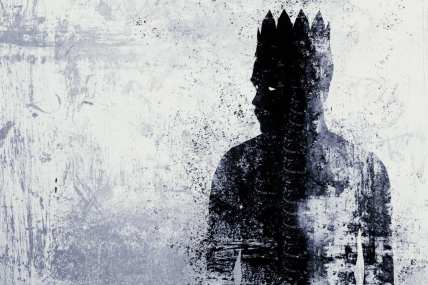10 African Queens You Should Know About
From royal advisors to leading the frontlines in war, these women brought effective change to their kingdoms with grace and style.
If you click on a Black woman’s social media page, it’s not unlikely to see comments like ‘SLAY’, ‘Come on Now’, or the most popular, ‘We see you, Queen!’ It’s a way to let our fellow sisters know we see them in all of their glory.
Women of the African diaspora are descendants of powerful Queens who ruled over kingdoms which were the foundation for contemporary civilization. In honor of Black History Month, we’d like to salute 10 iconic African Queens who ruled from the throne with strength, dignity, and grace.

Queen Hatshepsut, Ancient Egypt
Hatshepsut was the fifth pharaoh of the Eighteenth Dynasty of Egypt. She was the second historically confirmed female pharaoh, after Sobekneferu. As the daughter of King Thutmose I, Hatshepsut became Queen of Egypt when she married her half-brother, Thutmose II, around the age of 12 around 1492 BC. Hatshepsut birthed one daughter, Neferure, but no son. When Thutmose II died in 1479 BC, Hatshepsut had to act as Pharaoh since her stepson, Thutmose III was an infant. During her rule she expanded Egyptian trade and oversaw ambitious building projects, most notably the Temple of Deir el-Bahri, located in western Thebes, where she would be buried.
Nefertiti- Queen of Ancient Kemet, Egypt
Nefertiti was queen alongside Pharaoh Akhenaten from 1353 to 1336 B.C. Her reign was a time of major cultural shift when Akhenaten reoriented Egypt’s previously polytheistic religious and political structure around the worship of the Sun God Aten. There’s still a lot of mystery surrounding Nefertiti’s origin story; some scholars believe she may have been the daughter of Ay, a top adviser who would go on to become pharaoh after King Tut’s death in 1323 B.C. Others suggest she was a princess from the Mittani kingdom in northern Syria.
She was her husband’s Great Royal Wife when he took the throne in Thebes as Amenhotep IV. In the fifth year of his reign, he replaced Egypt’s chief god Amon with Sun God Aten, moved the capital north to Amarna, and changed his name to Akhenaten. Nefertiti also took on the additional name “Neferneferuaten” , making her full name meaning “Beautiful are the beauties of Aten, a Beautiful Woman has come.”
Nefertiti is best known for her painted sandstone bust, (pictured above in our header) which was rediscovered in 1913 and became a global icon of feminine beauty and power.
Makeda, Queen of Sheba
Makeda is best known as the beautiful, wealthy, and intellectual queen who tested Solomon with riddles according to biblical text. Even basic details such as her given name and the exact location of her kingdom still remain uncertain. Makeda has inspired African American, Ethiopian, Islamic, and Jewish cultures for nearly three thousand years. She was a monarch of the ancient kingdom of Sheba and is referred to in Habeshan history, the Hebrew Bible, the New Testament, and the Qur’an. Sheba was an ancient name for Abyssinia, a kingdom on the Red Sea in the vicinity of modern Ethiopia and Yemen. Queen Makeda of Sheba is often described as a courageous woman who bravely killed the serpent King Awre.
Queen Candace – Empress of Ethiopia
Queen Candace became world famous as a military tactician and field commander. Legend has it, she brought Roman Emperor Alexander Great to his knees. Alexander could not entertain even the possibility of having his world fame and unbroken chain of victories being ruined by a woman. When he attempted to conquer Queen Candace’s land in 332 BC, she arranged her armies strategically to meet him and was present on a war elephant when he approached. After he assessed the strength of her armies, Alexander decided to withdraw from Nubia, heading to Egypt instead.
Queen Moremi- Ile-Ife Kingdom, Nigeria
Queen Moremi was a legendary Yoruba queen and folk heroine in the Yorubaland region of present-day southwestern Nigeria. She’s known to have assisted in the liberation of the Yoruba kingdom of Ife from the neighboring Ugbo Kingdom. Moremi lived in the 12th century and was married to Oranmiyan, the heir to the king of Ife and founding father of the Yoruba people, Oduduwa. Ile-Ife kingdom was said to have been at war with an adjoining tribe who were known to them as the Forest People. The people of Ile-Ife did not have the means to defend themselves. This is because the invaders were seen as spirits by the people of Ife, appearing as masquerades completely covered in raffia leaves.
Moremi was a very brave and beautiful woman who, in order to deal with the problem facing her people, pledged a great sacrifice to the Spirit of the River Esimirin so that she could discover the strength of her nation’s enemies. She was taken as a slave by the Igbo and due to her beauty and Esimirin’s help, married their ruler as his anointed queen. Once she was in, she familiarized herself with the secrets of her new husband’s army. She then escaped to Ile-Ife and revealed her intel to the Yorubas, who were then able to subsequently defeat their enemies in battle.
Queen Idia- Kingdom of Benin
Queen Idia was the wife of Oba Ozolua, the Oba who reigned in about 1481 AD. She is best known for playing a very significant role in the rise and reign of her son, Oba Esigie who ruled from 1504-1550. Queen Idia was instrumental in securing the title of oba for Esigie following the death of his father, Oba Ozolua. She helped raise an army to fight off his brother Arhuaran, who was subsequently defeated in battle. Esigie thus became the 17th Oba of Benin. In 1977, Queen Idia was immortalized when an ivory carving of her face was adopted as the symbol of the Second World Black and African Festival of Arts and Culture (FESTAC).
Queen Njinga Mbandi , Angola
Njinga Mbandi was the Queen of Ndongo and Matamba. She was known for assisting her brother, Ngola Mbandi, establish himself as King after the death of their father Ngola Mbandi Kiluanji, in 1617. However, Ngola Mbandi didn’t have his father’s charisma nor the intelligence of his sister Njinga Mbandi. In 1622, Ngola felt pressured by demands from the Portuguese, so he sent Njinga Mbandi to Luanda to negotiate for peace with Dom João Correia de Sousa, the Portuguese Governor. Njinga proved to be an outstanding negotiator and diplomat.
When Ngola Mbandi died in 1624, Njinga took power and became queen. It wasn’t long before she distinguished herself as an exceptional sovereign. Her tactics in warfare and espionage, her ability to forge numerous strategic alliances, and her knowledge of trade and religious issues served her well in resisting Portugal’s colonialist aspirations until her death in 1663.
Queen Amina of Zaria, Nigeria
Commonly known as the original warrior queen, Queen Amina of Zaria was the first woman to become the Sarauniya (queen) in a male-dominated society. The reign of Amina occurred at a time when the city-state of Zazzau was at the crossroads between three major trade corridors of northern Africa, connecting the region of the Sahara with the remote markets of the southern forest lands and the western Sudan.
It was the rise and fall of the powerful and more dominant Songhai people which resulted in fierce competition for control of trade routes. As a result, there was constant war among the Hausa people and the neighboring settlements during the fifteenth and sixteenth centuries. During her reign, Amina was able to expand the territory of the Hausa people of north Africa to its largest borders in history. The modern state of Nigeria has immortalized Amina by building a statue in her honor with a spear in hand, on a horse, in the center of Lagos.
Queen Nandi – Zulu Kingdom, South Africa
Ndlorukazi Nandi kaBebe eLangeni (meaning The Sweet One) was born ca. 1760, in Langeni. She’s best known as the mother of Shaka Zulu. However, her son’s journey to the throne was far from easy.
Nandi was the daughter of Bhebhe, a minor chief of the Langeni tribe. It is believed that after visiting relatives in the Babanango Hills, Nandi and the small caravan that she was with encountered Zulu warriors. One of those warriors was Senzangakhona KaJama, King of the Zulu people.
Senzangakhona impregnated Nandi out of wedlock. When Nandi first informed the King of her pregnancy, village elders rejected her claims, stating that she had become infected by the Shaka beetle, which causes the stomach to bloat. Nandi was, in fact, pregnant and when the child was born, she named him Shaka after the beetle, giving birth to Shaka Zulu.
Nandi and Shaka were not welcomed with open arms, being constantly bullied by Senzangakhona’s other wives and their children. Eventually, Nandi took Shaka and fled the Zulu tribe, finding refuge with the Mthethwa clan. However, once they were able to return, Shaka claimed the throne as King and only appointed Nandi as Queen of the Zulu people but also as his advisor.
Yaa Asantewaa-Ashanti Kingdom, Ghana
Yaa Asantewaa was an influential Ashanti queen at the beginning of the twentieth century who remains a powerful symbol today. She is believed to have been born in 1840 in the Ashanti Confederacy (present-day Ghana). Yaa was a skilled farmer before becoming Queen Mother in the 1880s. She was appointed to the role by her elder brother Nana Akwasi Afrane Okpase, who was a powerful ruler at the time.
She was also nominated by a number of regional Asante kings to be the war-leader of the Asante fighting force, becoming the first and only woman to do so in Asante history—and get this, she was 60 years old! She was at the frontline at various occasions to give advice and refresh supplies for the Asante fighters.
While remaining leaders within the community debated on how to best respond to the British threat, Asantewaa held her ground and rallied the troops. Her leadership and passion led to her role as Commander in Chief of the Ashanti army. In turn, the Anglo-Ashanti wars’ fifth and final war against the British became known as the Yaa Asantewaa War of Independence, which began on March 28, 1900.
Asantewaa led the rebellion and became an image of strength and resistance. Unfortunately, she was captured during the rebellion and exiled to Seychelles, where she died in 1921.

Symone Davis is a Freelance Video Producer for theGrio whose career in journalism began in local TV news. Being in the industry for nearly 10 years, Symone has covered it all: breaking, consumer, lifestyle, and race & culture. She recently served as the lifestyle correspondent for WAVY-TV 10 in Portsmouth Va, where she kept viewers up to date on local events, new restaurants, and all things fun around town. The South Florida native also takes pride in rocking black and gold as a proud alumna of the University of Central Florida in Orlando, FL. Connect with Symone on Instagram @symoneadavistv
TheGrio is now on your TV via Apple TV, Amazon Fire, Roku, and Android TV. Also, please download theGrio mobile apps today!


